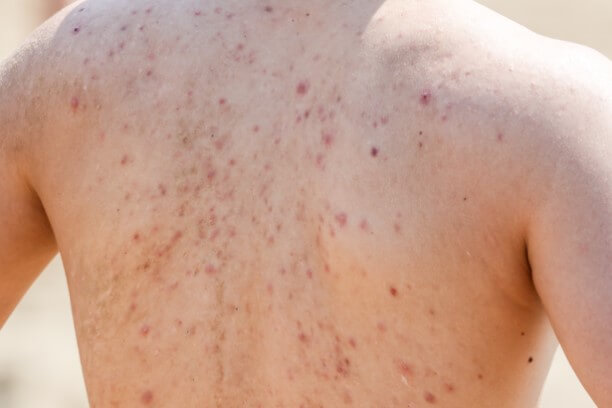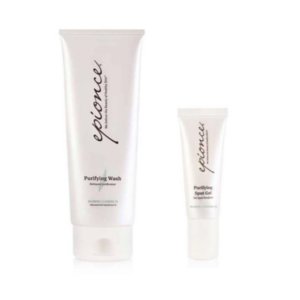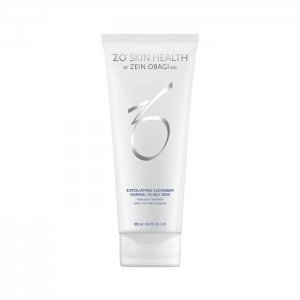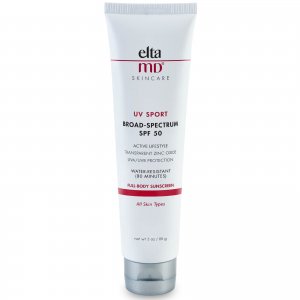Pimples that pop up on the face are bad enough, but when you’ve got pimples showing up on your back (and maybe your neck, chest, and other parts of your body) it can be extremely frustrating to deal with. Sometimes called bacne, this frustrating condition can be improved by working with a board-certified dermatologist. According to Dr. Arathi Rana of U.S. Dermatology Partners in Sherman and Paris, Texas, “Bacne can be one of the most difficult conditions for people to treat. You may be able to avoid sweat or irritation of the face that leads to flareups, but this is much more difficult to do for the whole body, especially if you exercise regularly. The good news is that your dermatologist can help you get back acne under control and develop a plan to manage future breakouts.” Keep reading to learn more from Dr. Rana about bacne causes and effective treatment options.
What is Acne? Is Bacne Different?
Acne is a very common skin condition that often develops in teens. It occurs when the skin’s pores become clogged, leading to infection and inflammation in the skin. Acne is typically associated with too much of the cutibacterium acnes (C. Acnes) bacteria on the skin and an overproduction of sebaceous gland oil (sebum) that is common during times of hormonal fluctuation, especially puberty.
According to Dr. Rana, “Bacne is just acne that forms on your back and other parts of the body rather than on the face. There are oil glands and pores all over the body, so you can develop acne breakouts anywhere. Because the skin on our bodies tends to be thicker and the pores and hair follicles may be larger, bacne can be more severe than breakouts on the face.”
In addition to common acne (acne vulgaris), which refers to clogged pores, bacne can actually be another form of acne called acne mechanica. This type of acne still leads to clogged pores, but the pores become clogged due to irritation and inflammation caused by repetitive movement, rubbing, or friction against the skin. People with bacne may develop acne mechanica when their clothing, hair, backpacks, jewelry, or other items rub or cling to the skin. Additionally, the thickness of the skin on the back and body, makes it much more likely that individuals will develop more severe cystic acne breakouts. Cystic acne causes the development of pimples deeper within the skin’s pores and hair follicles. The inflammation and infection can cause the body to respond to these pimples as though they are foreign invaders. When this happens, the body creates a cyst, which is a sac that encases the dead skin cells, infection, bacteria, oil, and grime.
What Causes Back Acne?
Back acne, and other forms of acne, occur when pores become clogged, which happens when sebum oil, skin cells, and C. Acnes bacteria build up inside the pores. Dr. Rana says, “The immediate cause of acne is clear – the pores are clogged, but many people with acne wonder why they have clogged pores and their friends don’t. We’re still learning more about acne, and there’s no specific cause of acne for each person. However, some common risk factors seem to link people who have acne-prone skin. For the most part, the factors that link people with back acne are the same.”
Some of the common risk factors associated with bacne include:
- Genetics
- Hormonal changes
- Sweat
- Tight or irritating clothing
- Friction
- Lifestyle factors (poorly managed stress, immune system disorders, certain medications, unhealthy diet, etc.)
What are the Treatments & Medications for Bacne?
According to Dr. Rana, “Bacne can be really difficult to treat because it’s harder to see. I know that sounds silly, but not being able to clearly see your pimples can make it more difficult to assess how severe the breakout is. And, it can be hard to apply treatment products directly to the affected area. Plus, the skin on the back is very thick, so it’s challenging to get topical treatments to absorb deeply enough. Based on the severity of bacne and other factors, including an individual’s response to specific treatments, dermatologists help patients create a plan to address bacne that works for them.”
Because of the difficulty of effectively using topical treatments for back and body acne, oral medications like antibiotics may be prescribed, especially to help patients control severe bacne breakouts. Oral antibiotics can be prescribed in the short term to reduce the amount of C. Acnes bacteria on the skin, which will often decrease the number of pimples and make it easier for the skin to heal during a breakout.
In very severe cases where other treatments aren’t effective, and isotretinoin may be prescribed. This treatment is very effective in offering a fast way to clear up severe breakouts that aren’t responding to other treatments, and in many cases, the results of Accutane treatment may last for months, years, or can be permanent. Because Accutane is associated with severe side effects, it requires close observation from a dermatologist, and it’s not appropriate for all patients.
Even though topical treatments for back acne can be difficult to apply, topical antimicrobials and other acne spot treatments may be an important part of the initial treatment and ongoing maintenance care plans for back acne. These topical treatments can help clear skin and relieve symptoms like itching, swelling, and inflammation associated with breakouts.
Women who struggle with bacne may see some improvement by taking oral contraceptives, which can help reduce the production of sebum oil. For individuals who have cystic acne on their backs, corticosteroid injections may be used to prevent the cyst from rupturing, which can lead to scarring and increased risk of infection.
Can I Manage Back Acne at Home?
Even with dermatologic treatments, every patient needs a plan to manage their back acne when they’re not in the dermatologist’s office. While each person should partner with a dermatologist to develop a unique plan for ongoing bacne care, some of the basic elements to keep in mind include:
Keep Skin Clean
Allowing dirt, oil, and grime to sit on the skin can definitely contribute to clogged pores, so cleaning skin regularly is important. While any gentle soap or body wash will work, there are products specifically geared toward fighting back and body acne breakouts. You should look for cleansers that are listed as non-comedogenic. This just means they are unlikely to clog pores. In addition to choosing products that are less likely to clog pores, you can also look for cleansers that have ingredients like salicylic acid, glycolic acid, lactic acid, and benzoyl peroxide. If you find that over the counter products aren’t effective, prescription-strength body washes are available to help clear up or prevent bacne breakouts.
Exfoliate
Gentle exfoliation is important for acne-prone skin. For many patients, dead skin cells aren’t being shed properly. Instead, they get trapped, contributing to clogged pores. It can be difficult to keep skin, especially on the back, exfoliated, but there are numerous scrub brushes and other products available to help you remove dead skin cells and make room for new, healthy skin. Gentle exfoliating body scrubs and acne treatment body washes with salicylic acid help to ensure healthy skin cell turnover. Dr. Rana reminds patients, “Exfoliation doesn’t mean painful scrubbing. Inflammation and irritation of the skin can be just as bad for back acne, so make sure you’re exfoliating gently. Your dermatologist can help you find the right gentle exfoliating products to remove dead skin cells without causing unnecessary irritation.”
Moisturize
According to Dr. Rana, “It may seem counterintuitive to moisturize your skin when oil production is leading to acne breakouts, but actually, insufficient levels of moisture and hydration trigger the production of more sebum oil. By keeping skin moisturized, patients reduce their body’s oil production and their risk for bacne breakouts.”
Just like body wash, you need to find non-comedogenic moisturizers, especially since these products will sit on the skin. You may also want to look for moisturizers that are labeled as fragrance-free, hypoallergenic, and/or oil-free. These moisturizers are less likely to irritate acne-prone skin. Look for beneficial moisturizer ingredients for acne treatment, including ceramides, hyaluronic acid, and salicylic acid.
Use Topical Bacne Spot Treatments
Just like treating large or painful pimples that pop up on the face, spot treatment can be extremely beneficial to get rid of back acne. There are numerous acne spot treatments available over the counter and by prescription. Some spot treatment products are even available in sprays to make application easier on any part of the body.
Avoid Irritating Acne-Affected Areas
Dr. Rana says, “Inflammation and irritation exacerbate back acne breakouts. Wearing damp, sweaty, or tight clothing is the most common cause of irritation that leads to bacne flareups, so it’s important to replace dirty or sweaty clothing as soon as possible after a workout. Patients should also choose fabrics that breathe and wick moisture away from the body, especially for workouts.”
Other common sources of irritation that lead to bacne flareups include:
- Popping or picking at pimples (this also increases infection and scarring risk)
- Workouts in tight clothing and introduction of bacteria, dirt, and germs from shared equipment and space
- Dirty sheets, towels, and clothing
- Long hair, jewelry, backpacks, and other items that can rub and irritate the skin
- Hygiene and cleaning products with fragrances, dyes, and chemicals
Maintain a Healthy Diet & Stay Hydrated
Eating nutritious foods and staying hydrated improves overall health, which in turn improves skin health. In addition to generally improved health and wellbeing, certain foods that contain probiotics (yogurt, kefir, miso), help keep skin healthy by encouraging faster cell turnover and boosting immune response. Other nutrient-rich foods like lean proteins, vegetables, and whole grains will help to maintain the overall health and function of the body. Conversely, eating unhealthy foods can cause a spike in blood sugar, which is linked to inflammation, oil production, and other factors that contribute to breakouts. In addition to eating the right foods, staying hydrated is essential to skin and whole-body health. Drinking enough water makes it easier for skin to stay hydrated and it flushes toxins out of the body, keeping you healthier.
Use the Right Sun Protection
Sun damage causes numerous skin health concerns, and adding a sunburn on top of acne inflammation and irritation is painful. So, it’s important to use sunscreen anytime your skin is exposed to sunlight. However, patients with acne shouldn’t use just any sunblock. Instead, they should look for products that are marked as non-comedogenic and oil-free.
When Should I Visit U.S. Dermatology Partners for Bacne Treatment?
Anyone who has acne should partner with a dermatologist to create an ongoing maintenance care plan, and they should schedule an appointment at least once or twice a year to follow up on their skin condition and avoid more severe breakouts. Additionally, patients with back acne should schedule a visit at U.S. Dermatology Partners anytime they have a breakout that is painful or lasts several weeks. We are happy to welcome patients back to our office locations, and you can schedule an in-person visit using our simple appointment request form.
We understand that some patients are not ready to venture out quite yet, so patients can also schedule a virtual consultation visit, starting with an online request form. These consultations are great if you just need to touch base with your dermatologist about your ongoing bacne care plan. Virtual consultations are also beneficial if you want to chat with a dermatologist about your condition to find out whether or not in-office treatment is necessary. Whichever type of appointment you schedule, we look forward to hearing from you soon.
Find a location near me
or






